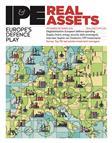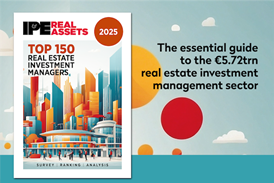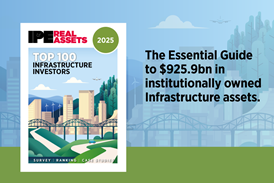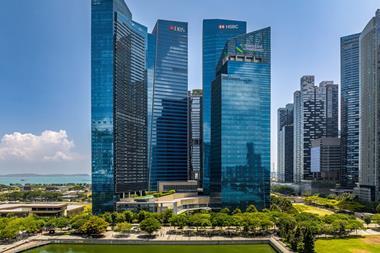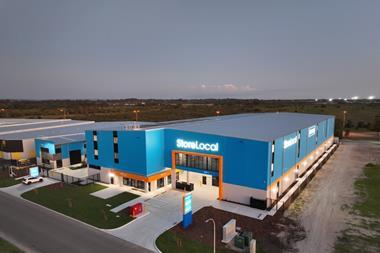A full analysis of food retail opportunities requires understanding an operator’s performance through its catchment, turnover and store sizing, writes Ian Jones
Looking back at the early days of the global pandemic, food retail faced some serious challenges. In the UK – and to a lesser extent across continental Europe – delays in the supply chain and disruptions to bulk grocery purchasing tested the commonly held belief that physical grocery shopping was insulated from the rise of e-commerce.

As we emerged from lockdowns, these concerns quickly faded and confidence was restored. The proof in the UK was seen in surveys undertaken by several local authorities.
They showed that by the time Covid-19 restrictions were being lifted roughly two-thirds of people were doing their weekly food shopping either in their local supermarket or through a click-and-collect service online, as more – not less – emphasis was being placed on the structural resilience of large multiples like Tesco, Sainsbury’s, Aldi and Lidl.
Since the end of 2022, inflation has been climbing and the case for food retail in the context of an allocation to real estate is again under question. Despite concerns that higher prices would translate into smaller, more conservative baskets at checkout, food as a proportion of overall spending has remained consistent across core markets in the UK and Europe, as operators have benefitted from the general stickiness of demand for staples.
What else should institutional investors be considering?
In this current environment, when it comes to food retail, beyond its status as needs-based, countercyclical real estate, there are several factors we see supporting the investment thesis that underpins the attractiveness of the asset class. Some of these lend defensive attributes to broader portfolio construction in periods of high uncertainty – even in limited quantities.
Across a broad sweep of geographies, the quality of existing operators is a plus. From our perspective, covenant strength comes in the form of large-scale, often listed companies with ample free cash flow, that have long-standing credibility and the infrastructure to comfortably meet their lease obligations across complex estates.
These also tend to be evolving businesses that heavily diversify their activities – and thereby their income – within their floorplate, such as in the enhancement of their delivery and back-end depot facilities, or in the experiences available to customers in-store.
Quantity and competition are two other considerations
In the UK, this is probably most pronounced, but in countries like France, Spain, Portugal, Italy, Denmark and Germany, a healthy selection of potential tenants mitigates concentration and obsolescence risks.
Of course, this ultimately depends on granular knowledge of demands on space. In Spain and Denmark chains like Mercadona and Aldi, REMA and Netto, respectively, tend to work to smaller formats ranging from 10,000sqft to 20,000sqft, which is significantly smaller than the 40,000sqft average in the UK.
By contrast, in France, hypermarkets and supermarkets tend to be more commonly integrated within or co-located with shopping malls, while UK food-anchored retail parks are increasingly seen in regional towns and cities.
In Portugal, Continente’s Modelo format of circa 50,000sqft, offers a range of convenience retailers from the Sonae group in addition to grocery, providing a proven “one stop shop” solution
Cost of developing decentralised cold chain and warehousing logistics is high barrier to entry
Against the assumption that e-commerce would take larger chunks out of these companies’ market share, the cost of developing decentralised cold chain and warehousing logistics has proven a high barrier to entry. Bricks and mortar stores that double up as the base through which delivery can be serviced has proven to be a compelling way to achieve proximity to customers without adding dramatically to overheads, further strengthening the appeal of physical grocery retail.
In addition to its stable income, food retail also offers inflation linkage through indexation clauses, with favourable caps and collars, and annual or five-yearly compounded reviews. The value of the planning consent and the tendency of grocery sites to be near to strategic transport networks and at the intersection of multiple urban and suburban communities, also provides confidence in underlying land value.
Constantly evolving trading performance
A full analysis of food retail opportunities, however, also requires a deep understanding of the operator’s underlying trading performance in each location, from a careful analysis of real catchment and turnover, and the “right sizing” of a store. While the depth of occupiers and end-consumers is the basis for the demand/supply story, the requirements at either end of this barbell are constantly evolving.
In the case of Denmark and Italy, that could be signalled by the incremental uptick in average unit size as consumers look for a ‘one-stop-shop’. Whereas in the UK, more anecdotal evidence suggests consumer preference for multiple trips to different supermarkets with the intention of buying staple goods in discount stores and favourite brands in the bigger chains.
The food retail sector is increasingly gaining favour with investors. The defensive nature of the asset class will undoubtedly appeal to those looking for security in a choppier climate. Yield stability, particularly in more competitive and planning restrictive core markets, is testament to that.
But for a sector where operators are the end point of a complicated upstream comprising operations, procurement, and food purchasing, keeping on top of how formats are changing is how the real estate provided will remain relevant, flexible and of enduring value to institutional portfolios as confidence returns and investors expand their positions in the asset class.
To read the latest IPE Real Assets magazine click here.

